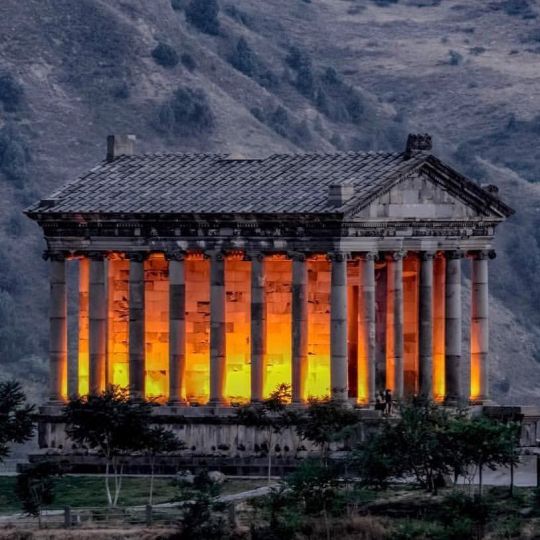#the temple of garni
Text
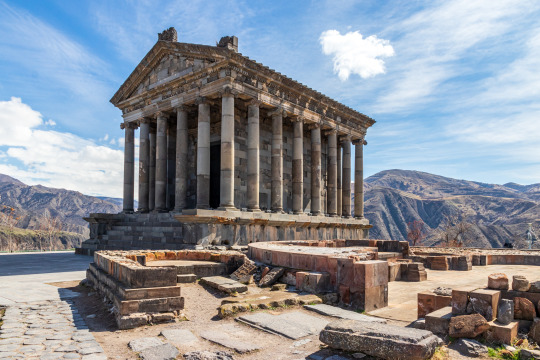
The Temple of Garni, Armenia
The 24 pillars of the temple symbolize the 24 hours of the day, while the steps leading to the temple are so tall and arduous to ascend that upon reaching the top, it's difficult to fathom having climbed merely nine steps. The height of these stairs is intentional; even the most fit and tallest individual, ascending the temple, must bow with each step. The solemn ascent demands a deliberate pace—running up the stairs is impossible; one must instead bow in reverence and contemplate with each step.
513 notes
·
View notes
Photo

Ionic Temple of Garni, Armenia, 1st century AD.
5K notes
·
View notes
Text

The Greco-Roman Temple of Garni, Kotayk, ARMENIA
140 notes
·
View notes
Text
Prayer request opened
I will be going to Armenia tomorrow to visit Temples and Churches, if anyone wants me to visit a specific church or temple and offer their prayers there please mention where you want it and I will do my best to offer it.
If you want it either in a church or in temple of Garni, I will do my utmost respect to give your prayer there.
#occult#magic#theurgy#prayer#pagan#temple of garni#churches#christianity#christ#holy spirit#invocation
3 notes
·
View notes
Photo

14 notes
·
View notes
Text
սեր🫶🏻
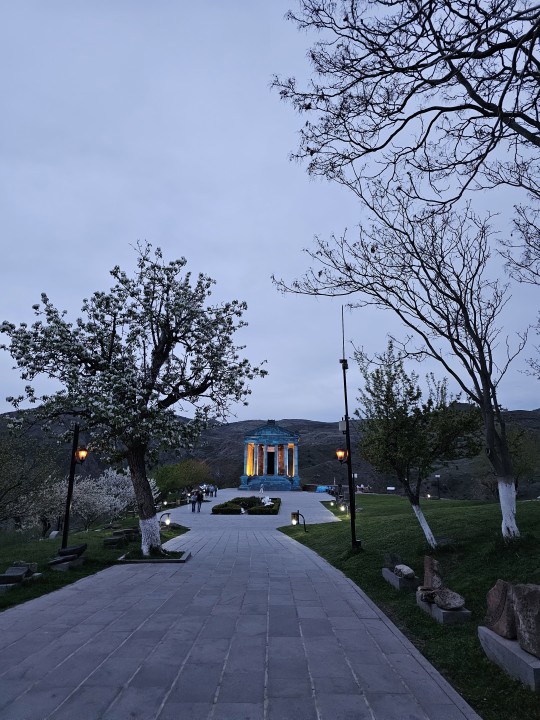

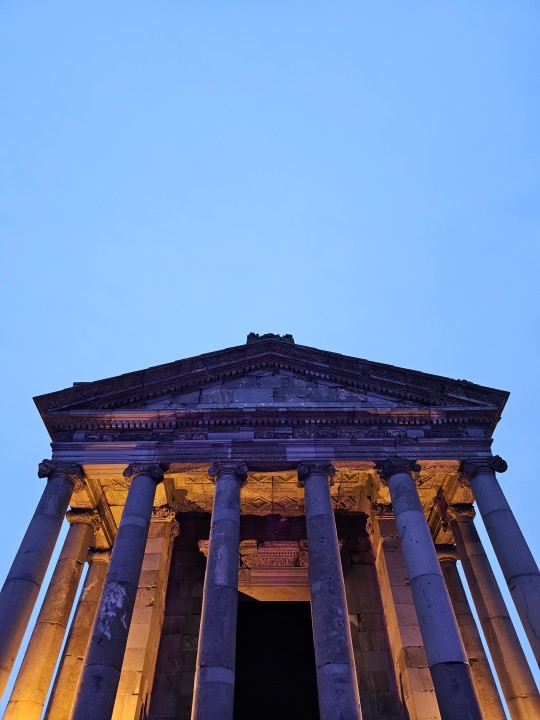

#armenia#армения#հայաստան#garni#temple#գառնի#гарни#գառնու տաճար#կատու#кот#cat#nature life#բնություն#природа#весна#spring#գարուն#любовь#life#սեր#կյանք
6 notes
·
View notes
Text
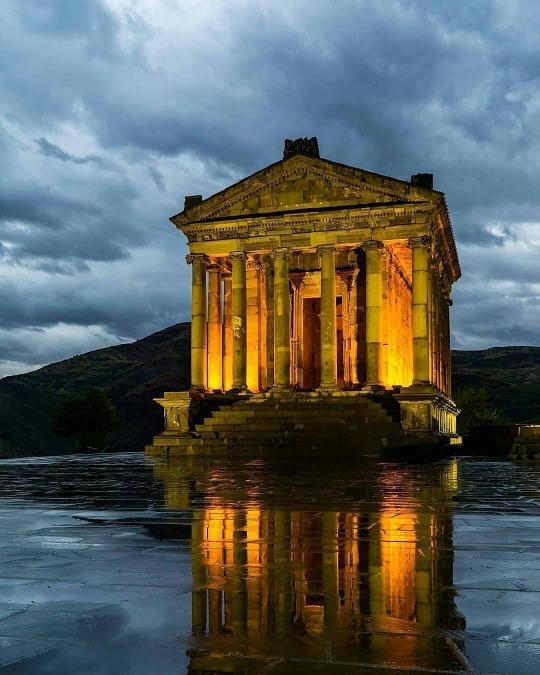
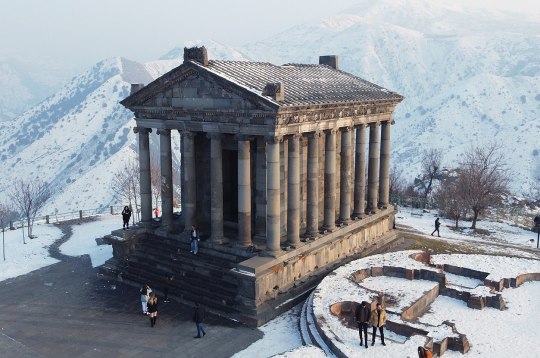
The Temple of Garni (Armenia) is the only standing Greco-Roman colonnaded building in Armenia and the former Soviet Union. Built in the Ionic order, it is located in the village of Garni, in central Armenia, around 30 km (19 mi) east of Yerevan. It is the best-known structure and symbol of pre-Christian Armenia.
The structure was probably built by king Tiridates I in the first century AD as a temple to the sun god Mihr. After Armenia's conversion to Christianity in the early fourth century, it was converted into a royal summer house of Khosrovidukht, the sister of Tiridates III. According to some scholars it was not a temple but a tomb and thus survived the destruction of paganstructures. It collapsed in a 1679 earthquake. Renewed interest in the 19th century led to excavations at the site in early and mid-20th century, and its eventual reconstruction between 1969 and 1975, using the anastylosis method. It is one of the main tourist attractions in Armenia and the central shrine of Hetanism (Armenian neopaganism).
5 notes
·
View notes
Text
Garni Temple
Looking like a mini-Parthenon, the temple at Garni is the only Graeco-Roman type structure in the whole of Armenia. The temple is on a triangle of land thrusting out above the Azat River. This is a naturally defensible position above a spectacular gorge where I saw basalt columns, similar to the Giant’s Causeway in Northern Ireland. Indeed, walking along the gorge is a great way to start a visit…

View On WordPress
0 notes
Text

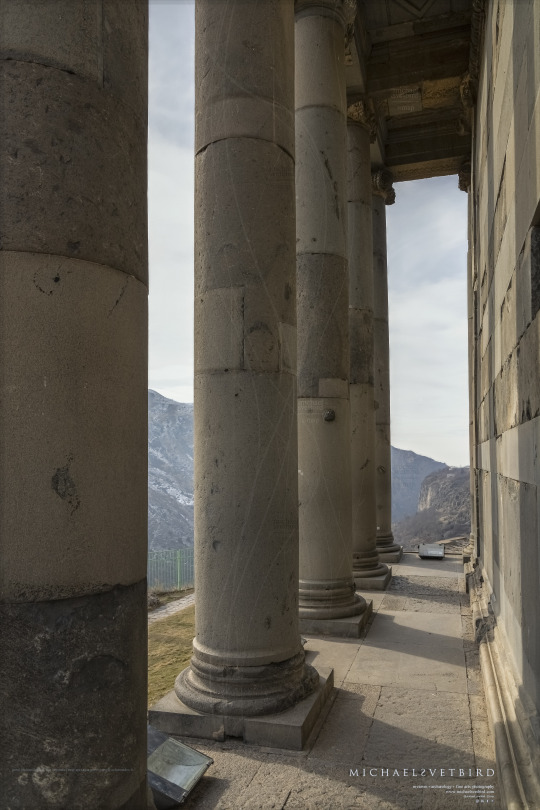

GARNI Archaeological Site and Temple, Kotayk Province, Armenia
https://en.wikipedia.org/wiki/Garni_Temple
1 AD.
Just a little teaser preceding my forthcoming article about Garni which most likely, I hope, will be published in late spring - the photographs presented [architectural details] are part of a larger set:
Garni Temple portico | pronaos,
Temple side colonnades,
Roman baths floor mosaic | detail.
Գառնի | Michael Svetbird phs©msp | 12|23-01|24 6300X4200 600 [I.-III.]
[photos are subject to copyright, sorry for the watermarks]
.
#garni#garni temple#armenia#հայաստան#archaeological site#historical landmark#1 ad#ancient architecture#ionic order#roman architecture#roman#temple#roman baths#ruins#ancient#heritage#archaeology#museology#museum#antiquities#ancient history#ancient cultures#ancient world#architecture#floor mosaic#publication#art photography#archaeology photography#museum photography#michaelsvetbird
1 note
·
View note
Text
youtube
#Armenia travel#Armenian destinations#must-visit places in Armenia#Armenia tourism#Tatev Monastery#Lake Sevan#Garni Temple#Yerevan#Armenian culture#travel guide#hidden gems#cultural marvels#Armenia landmarks#Armenian history#travel video#wanderlust#explore Armenia#adventure travel#Armenian heritage#travel inspiration#off-the-beaten-path#nature in Armenia.#Youtube
0 notes
Video
youtube
Храм Гарни / The Temple of Garni
#античность#язычество#храм#гарни#армения#путешествие#михр#antique#antiquities#temple#garni#armenia#architecture#travel#paganism
1 note
·
View note
Text
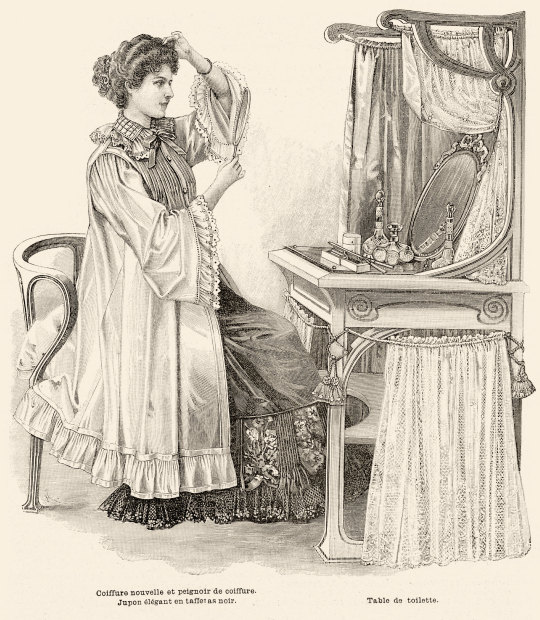
La Mode illustrée, no. 30, 29 juillet 1900, Paris. Coiffure nouvelle et peignoir de coiffure. Jupon élégant en taffetas noir. Table de toilette. Ville de Paris / Bibliothèque Forney
Coiffure nouvelle et peignoir de coiffure.
Cette coiffure, pour jeune dame, convient à une chevelure ondulée de longueur moyenne.
On partage les cheveux d'une oreille à l'autre, on relève la partie de derrière, on la noue au moyen d'un ruban. On ondule les cheveux de devant en larges vagues, on les rattache aux cheveux de derrière, puis on dispose les extrèmités de tous les cheveux ainsi réunis en une touffe de boucles; on frise les cheveux en petites boucles sur les tempes, puis on fixe derrière, sous la touffe de boucles, un peigne en écaille blonde figurant un serpent (voir la gravure représentant la coiffure vue par derrière).
Le peignoir de coiffure en nansouk est fait avec de larges manches et un col rabattu bordés de volants brodés fixés sous un entre-deux ajouré; le col est garni de jours quadrillés.
Les devants sont disposés en petits plis; le dos est fait avec trois plis creux ayant chacun 3 centimètres de largeur et piqués l'un sur l'autre. Le contour inférieur est bordé d'un volant et l'on complète le peignoir en passant, sous le col rabattu, un ruban de couleur que l'on noue devant.
—
This hairstyle, for a young lady, is suitable for wavy hair of medium length.
We share the hair from one ear to the other, we raise the back part, we tie it with a ribbon. We wave the front hair in wide waves, we attach them to the back hair, then we arrange the ends of all the hair thus united in a tuft of curls; we curl the hair in small curls on the temples, then we fix behind, under the tuft of curls, a blond tortoiseshell comb representing a snake (see the engraving representing the hairstyle seen from behind).
The nansouk hairdressing robe is made with wide sleeves and a turn-down collar edged with embroidered flounces fixed under an openwork in-between; the collar is lined with squared days.
The fronts are arranged in small pleats; the back is made with three box pleats, each 3 centimeters wide and stitched one over the other. The lower contour is edged with a flounce and the bathrobe is completed by passing a colored ribbon under the turned-down collar that is tied in front.
—
Table de toilette.
Cette table de style moderne, construite en bois blanc, peut être établie sans trop de frais par un menuisier; on peint la table en blanc laqué avec de la couleur émail et les arabesques en bleu. On peut également la décorer en pyrogravure ou la peindre en couleurs laquées de tons divers.
La table est garnie d'un morceau de drap bleu clair, recouvert d'une plaque de cristal assez forte fixée par des vis de métal. Le devant et les deux côtés de la table sont garnis de rideaux en tulle brodé exécutés d'après les gravures No. 1. et No. 2, posés sur de la satinette ou bien sur de la soie légère bleu clair.
On coupe pour ces rideaux trois morceaux de tulle d'environ 75 centimètres de hauteur et 1 mètre de longueur et deux morceaux de la même hauteur mais ayant seulement 80 centimètres de longueur pour les rideaux du haut. On garnit le tulle avec la broderie, on borde le contour inférieur avec des festons en découpant l'étoffe qui dépasse, on exécute un ourlet le long des côtés; on pose les rideaux de tulle et les rideaux bleus sur la même coulisse. On fixe, au bord supérieur des anneaux de métal à travers lesquels on passe des cordelières en soie bleue, terminées par des glands; on fixe ces cordelières, en les croisant, sur les pieds de la table à l'aide de clous en bronze. On drape les rideaux en les retenant par des cordelières semblables.
La garniture de toilette se compose d'une glace avec cadre ciselé en vieil argent, de brosses, peignes, boîte à poudre, glace à main en ivoire et de flacons de cristal.
—
This modern style table, built in white wood, can be built by a carpenter without too much expense; the table is painted in white, lacquered with enamel color and the arabesques in blue. It can also be decorated with pyrography or painted in lacquered colors of various tones.
The table is lined with a piece of light blue cloth, covered with a rather strong crystal plate fixed by metal screws. The front and both sides of the table are lined with embroidered tulle curtains executed from engravings No. 1. and No. 2, placed on sateen or on light blue light silk.
We cut for these curtains three pieces of tulle about 75 centimeters high and 1 meter long and two pieces of the same height but only 80 centimeters long for the top curtains. We trim the tulle with embroidery, we border the lower contour with scallops by cutting out the protruding fabric, we run a hem along the sides; the tulle curtains and the blue curtains are placed on the same slide. Metal rings are attached to the upper edge through which blue silk cords are passed, ending in tassels; these cords are fixed, by crossing them, on the legs of the table with the help of bronze nails. The curtains are draped by holding them with similar cords.
The toilette set consists of a mirror with a chiseled frame in old silver, brushes, combs, powder box, hand mirror in ivory and crystal bottles.
#La Mode illustrée#20th century#1900s#1900#on this day#July 29#periodical#fashion#fashion plate#description#Forney#dress#peignoir#coiffure#furniture
83 notes
·
View notes
Text
Q: As a poet, which performance place do you like to recite your poems?
In the beginning ...

… it really came down to which location had the best acoustics, since more often than not you’re trying to perform while a dozen different background noises do their best to drown you out. Book shops (the photos on the left were taken at Schuler's Books) were better than cafes and their espresso machines that would make the most horrific noises every time someone ordered a coffee. The Milan train station, on the other hand, while having fabulous acoustics was a hopeless cause since the audience clearly didn’t come here to listen to a lisping American read poetry in English. They were more concerned about getting to their trains and I was simply one more obstacle in their way.

I would say that the most interesting place I’ve preformed, so far, is at the sacred temple, Garni, dating back to pre-Christian Armenia.
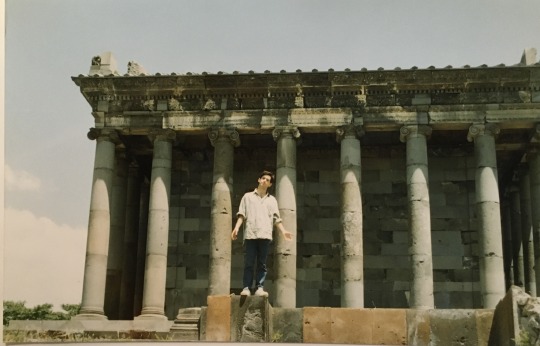
I don’t actually have a whole lot of photos of myself performing; partly because we didn’t have camera phones back in the 1980s and early 90s but mainly because the friend of mine who did bring his camera wherever he went has since passed on and I had other things on my mind besides asking, “I know you’re actively dying but could you get your hospice nurse to look around your office and see if you have any photos of me?” Whatever photos he did take have long since vanished from this earth.
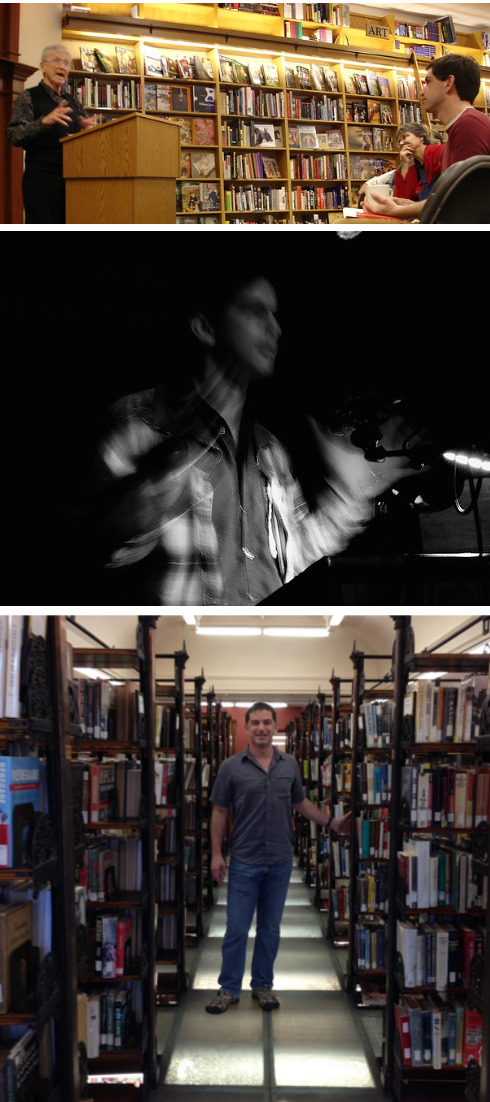
… and yes, in the last photo this is what Alcohol Bloat looks like. It would be several years after this photo was taken in the Muskegon public library (again, great acoustics) before I started Recovery and AA.
19 notes
·
View notes
Photo
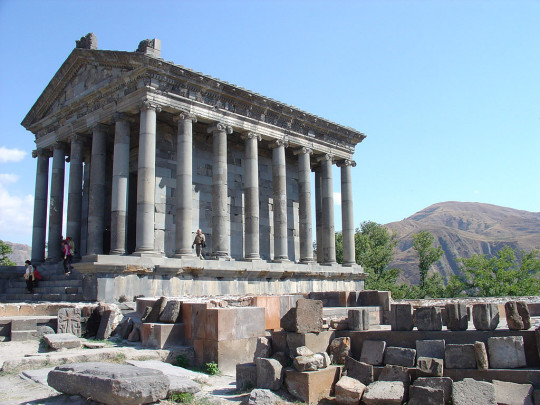
Temple de Garni
Le temple de Garni (en arménien: «Garnu tacar») est situé dans le village de Garni dans la province de Kotayk, en Arménie. Il était autrefois un temple païen dédié au dieu solaire arménien, Mihr. Construit au milieu du 1er siècle ap. J.-C., le temple de Garni a remarquablement survécu à la période de destruction des temples païens suite à la conversion de l’Arménie au christianisme au 4e siècle ap. J.-C. Il a aussi résisté à d’innombrables invasions et tremblements de terre jusqu’à son effondrement en 1679. Suite à une période de fouilles archéologiques entre la fin du 19e siècle jusqu’au début du 20e siècle, le temple de Garni a finalement été reconstruit entre 1969 et 1975. Aujourd’hui, il s’agit de la seule structure gréco-romaine en Arménie. Il est considéré par beaucoup comme un puissant symbole du passé classique de l’Arménie, ainsi qu’un symbole de ses liens historiques avec les civilisations grecque et romaine.
Lire la suite...
3 notes
·
View notes
Text
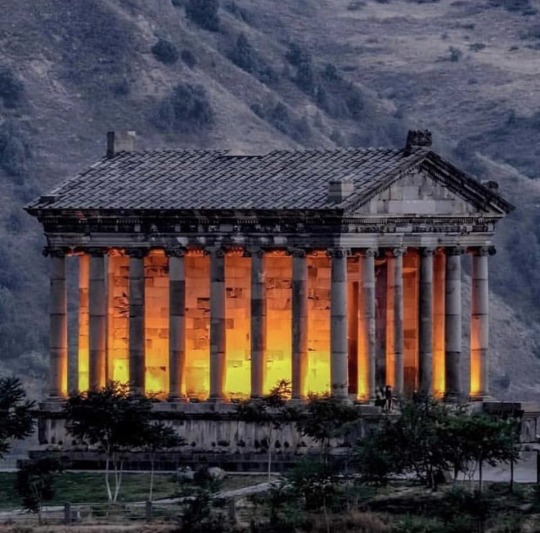
The Temple of Garni, Kotayk Province, Armenia
Likely dedicated to the sun god Mihr by Tiridates I in 77 AD, ten years after having been crowned king by Emperor Nero in Rome, this structure, crafted distinctly in the ionic order out of local basalt, is, for reasons still unknown, the only one of its kind to have survived the persecution of pagans and the destruction of their monuments during Armenia’s conversion to Christianity in the 4th century AD. Variously refitted throughout the Middle Ages as a royal summer home and perhaps even as a mosque for a time, it was eventually toppled in a devastating earthquake in 1679 and laid in ruins until 1975, when a decades-long effort by architectural historians seeking to reconstruct the building using almost entirely original stones finally came to fruition, producing the temple which stands at the site today.
74 notes
·
View notes
